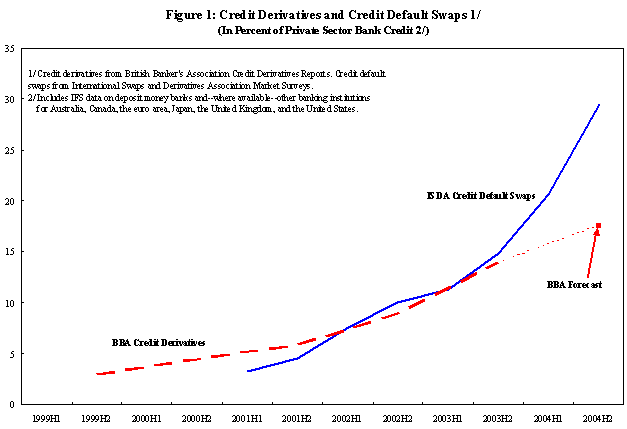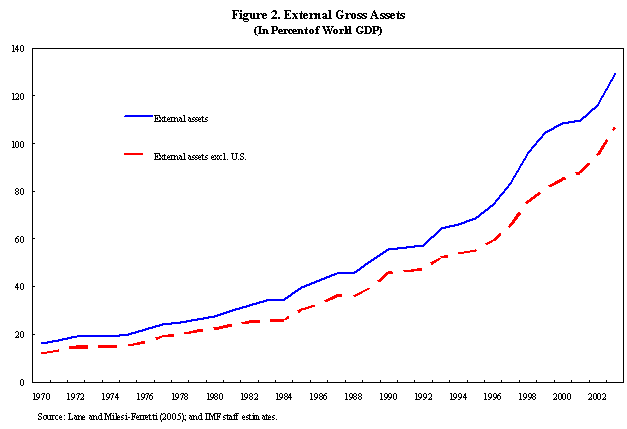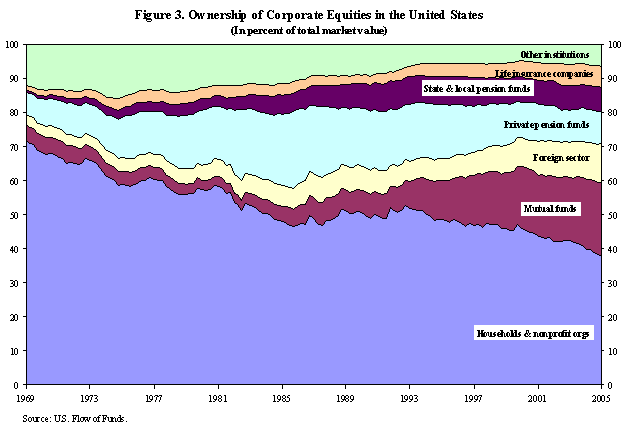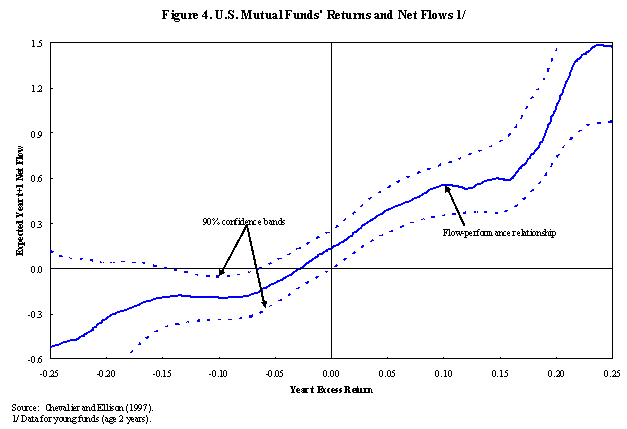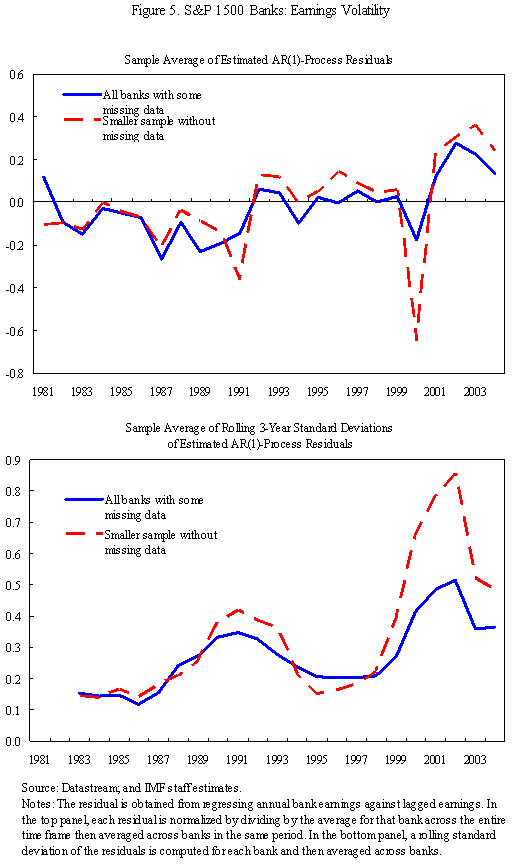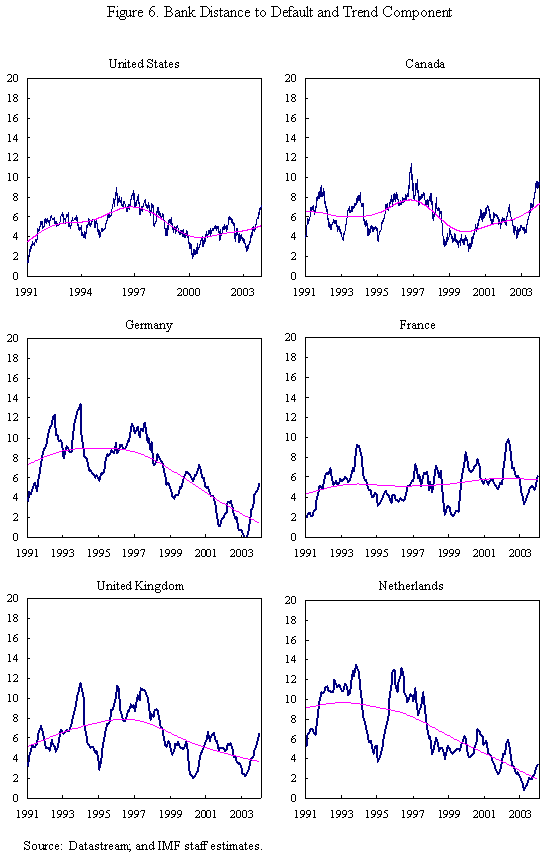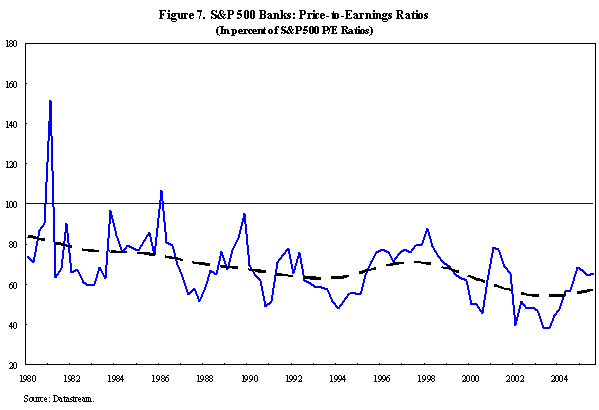The Greenspan Era: Lessons for the Future, Speech by Raghuram G. Rajan, Economic Counsellor and Director of the IMF's Research Department
August 27, 2005
by Raghuram G. Rajan
Economic Counsellor and Director of the IMF's Research Department
Financial Markets, Financial Fragility, and Central Banking
A Symposium Sponsored by the Federal Reserve Bank of Kansas City
Saturday, August 27, 2005, Jackson Hole, Wyoming
Good morning. Let me state at the outset that these are my personal views. The topic for this session covers an enormous landscape. I simply could not do justice to it if I tried to be comprehensive - that would require a few volumes. At the same time, this conference deserves a view from 30,000 feet rather than a view from the trenches. So I will be selective in what I focus on, emphasizing what I believe to be a broad and important trend. Ultimately, though, the job of many of us in this room is to recognize the broad trend, and then get down to the nitty gritty of figuring out how to deal with it. I confess that the nitty gritty is far more difficult, so I will only speculate on what, if anything, ought to be done. My intention is to provoke discussion rather than to attempt to end it.
It is a cliché, though nonetheless true, that in the past thirty years financial systems around the world have undergone revolutionary change. People can borrow greater amounts at cheaper rates, invest in a multitude of instruments catering to every possible profile of risk and return, and share risks with strangers across the globe. Financial markets have expanded and deepened, and the typical transaction involves more players and is carried out at greater arm's length. These changes have undoubtedly benefited all of us.
At least three forces are behind these changes. Technical change has reduced the cost of communication and computation, as well as the cost of acquiring, processing, and storing information. In addition, techniques to assess and manage risks, ranging from financial engineering to portfolio optimization, and from securitization to credit scoring, are now widely used. Deregulation has removed artificial barriers preventing entry of new firms, and has encouraged competition between products, institutions, markets, and jurisdictions. And institutional change has created new entities within the financial sector-such as private equity firms and hedge funds-as well as new political, legal, and regulatory arrangements. For example, within the last two decades we have seen the emergence of the entire institutional apparatus behind the practice of inflation targeting, ranging from central bank independence to the publication of regular inflation reports.
These figures illustrate the rapid move to more arm's length transactions. Something as intimate as credit risk is now being traded with strangers. In fact, in the same way as
The expansion in the variety of intermediaries and financial transactions has major benefits, including reducing the transaction costs of investing, expanding access to capital, allowing more diverse opinions to be expressed in the marketplace, and permitting better risk sharing. These changes have made society better off. But along with the opportunities to do good, they have created opportunities to make things worse. The balance between the two is determined by the incentives of players. I will now turn to incentives and potential sources of distortion, without in any way intending to minimize the enormous benefits we have derived. In the 1950s and 1960s, before the changes that have swept the financial world, bank managers were paid a largely fixed salary. Given that regulation kept competition muted, there was no need for shareholders to offer managers strong performance incentives (such incentives might even have been detrimental as it would have tempted bank managers to reach out for risk). The main check on bank managers making bad investment decisions was the bank's fragile capital structure (and possibly regulators). If bank management displayed incompetence or knavery, depositors would get jittery and possibly run. The threat of this extreme penalty, coupled with the limited upside from salaries that were not buoyed by stock or options compensation, combined to make bankers extremely conservative. This served depositors well since their capital was safe. Shareholders, who enjoyed a steady rent because of the limited competition, were also happy. Of course, customers suffered but it is only in the new deregulated, competitive environment that the customer is king. In this new environment, however, investment managers can't be provided the same staid incentives as bank managers of yore. Because they need the incentive to search for good investments, their compensation has to be sensitive to investment returns, especially returns relative to their competitors. Furthermore, the market provides its own incentives. New investors are attracted by the high returns generated by a manager. And current investors, if dissatisfied, do take their money elsewhere although they often suffer from inertia in doing so. Figure 4 plots the flows into an average U.S. mutual fund as a function of the returns it generates. As you can see, positive excess returns generate substantial inflows while negative returns generate much milder outflows. Since compensation also varies with assets under management, overall, investment managers face a compensation structure that moves up very strongly with good performance, and falls, albeit more mildly, with poor performance. In the jargon of economists, the compensation structure is convex in returns. The compensation structures for hedge fund managers or Therefore, the incentive structure for investment managers today differs from the incentive structure for bank managers of the past in two important ways. First, there is typically less downside and more upside from generating investment returns, implying that these managers have the incentive to take more risk. Second, their performance relative to other peer managers matters, either because it is directly embedded in their compensation, or because investors exit or enter funds on that basis. The knowledge that managers are being evaluated against others can induce superior performance, but also perverse behavior of various kinds. Let me highlight two particularly worrisome behaviors, worrisome because they can feed on each other. One type is to take risk that is concealed from investors. Since risk and return are related, when the manager conceals risk, it looks as if he outperforms peers given the risk he apparently takes. Typically, the kinds of risks that can most easily be concealed, given the requirement of periodic reporting, are "tail" risks-that is, risks that have a small probability of generating severe adverse consequences and, in exchange, offer generous compensation the rest of the time. For example, I could write guarantees against a creditor defaulting. I will earn the premiums on this guarantee most of the time, without any additional volatility on my portfolio holdings. Most of the time, I will look as if I am outperforming my comparison group for I will have generated returns with no apparent risk. But every once in a while, disaster will strike and the creditor will default. My true risk profile will then be revealed but too late for my investors. Every generation of investment managers finds a new way to goose up returns for seemingly no additional risk, only to reconfirm the old adage: There is no return without risk. A second behavior is to herd with other investment managers on investment choices, because herding provides insurance the manager will not underperform his peers. However, herd behavior can move asset prices away from fundamentals. Both behaviors can reinforce each other during an asset price boom, when investment managers are willing to bear the low probability "tail" risk that asset prices will revert to fundamentals abruptly, and even write guarantees against it, while the knowledge that many of their peers are herding on this risk gives them comfort that they will not underperform significantly if boom turns to bust. These behaviors can be compounded in an environment of low interest rates. Some investment managers have fixed rate obligations which force them to take on more risk as rates fall. Others like hedge funds have compensation structures that offer them a fraction of the returns generated, and in an atmosphere of low returns, the desire to goose them up increases. Thus not only does the incentives of some participants to "search for yield" increase in a low rate environment, but also asset prices can spiral upwards, creating the conditions for a sharp and messy realignment. So long as there are some sober participants who can come in to pick up the pieces when the frenzy is over, financial sector volatility will affect the real sector only indirectly, for example by changes in wealth affecting consumption. One key source of sobriety is the banks. Will they remain immune to the frenzy? Let us turn to that question now. The compensation of bank managers, while not so tightly tied to returns, has not been left completely untouched by competitive pressures. Banks make returns both by originating risks and by bearing them. As traditional risks such as mortgages or loans can be moved off bank balance sheets into the balance sheets of investment managers, banks have an incentive to originate more of these risks. Thus they will tend to feed rather than restrain the appetite for risk. As I argued earlier, however, banks cannot sell all risk. In fact, they often have to bear the most complicated and volatile portion of the risks they originate, so even though some risk has been moved off their balance sheets, they are being reloaded with fresh, more complicated, risks. The data support this assessment-despite a deepening of financial markets, banks in industrial countries may not be any safer than in the past. In Figure 5, we plot the average level of bank earnings residuals, as well as their volatility, using a standard earnings prediction model. The graphs indicate that bank earnings volatility in the United States has increased over the last twenty years. In Figure 6, we plot bank distance to default, one measure of the default risk of banks. That distance has remained constant or fallen across a number of industrial countries, again indicating banks are no less risky than in the past, and perhaps riskier. Finally, turn to Figure 7. Assuming that bank earnings are growing at the same rate as the overall market, the price earnings ratio of banks relative to the price earnings ratio for the market should give us a measure of the relative rate at which bank earnings are being discounted. The ratio is falling, suggesting that bank earnings are being discounted at a higher and higher rate, implying the market sees them as riskier. The bottom line is that banks are certainly not any less risky than the past despite their better capitalization, and may well be riskier. Moreover, banks now bear only the tip of the iceberg of financial sector risks. But perhaps the most important concern is whether banks will be able to provide liquidity to financial markets so that if the "tail" risk does materialize, financial positions can be unwound and losses allocated so as to minimize the consequences to the real economy.
Banks have in the past been able to provide liquidity in part because their sound balance sheets allowed them to attract available spare liquidity in the market. When the commercial paper market dried up for many issuers following the Russian crisis in 1998, banks with higher levels of transaction deposits were perceived (by the stock market) to be lower risk. They experienced larger inflows of funds - possibly from investors fleeing the commercial paper market - just when firms denied access to commercial paper started taking down back-up lines of credit from these banks. Thus banks helped intermediate liquidity back into the system in a time of crisis. As the crisis passed, back-up lines were repaid, and deposits flowed back into commercial paper. Central banks can also help by increasing overall liquidity, as did the Federal Reserve in 1998.
Taken together, these trends suggest that even though there are far more participants who are able to absorb risk today, the financial risks that are being created by the system are indeed greater. And even though there should theoretically be a diversity of opinion and actions by market participants, and a greater capacity to absorb risk, competition and compensation may induce more correlation in behavior than is desirable. While it is hard to be categorical about anything as complex as the modern financial system, it's possible that these developments are creating more financial-sector induced procyclicality than in the past. They may also create a greater (albeit still small) probability of a catastrophic meltdown. Unfortunately, we won't know whether these are, in fact, serious worries until the system has been tested. It is true the volatility of growth in industrial countries has been falling, partly as a result of the increasing flexibility of real economies, partly as a result of better policies, partly as a result of increased trade, and partly as a result of better financial markets. But the nature of tail risks, especially those related to credit, is such that we should not be lulled into complacency by a long period of calm. The absence of volatility does not imply the absence of risk, especially when the risk is tail risk. It is also true the financial system has survived some pretty big shocks in the past, under the able stewardship of Chairman Greenspan. The crash of 1987, the world panic of 1998, the bursting of the stock market bubble in 2000-2001 were all shocks that might have had far worse consequences for industrial country financial sectors, and for the world economy, were it not for appropriate intervention by monetary authorities. Can we be confidant that the shocks were large enough and in the right places to fully test the system? After all, a shock to equity markets, though large, may have less effect than a shock to credit markets. In other words, can we be confidant that all losses are equal, or will some losses be more systemic than others? Perhaps Chairman Greenspan should be faulted for allowing only two mild recessions during his tenure. And perhaps we can sleep better at night if we pray,"Lord, if there be shocks, let them be varied and preferably moderate ones, so we can stress test our systems". Before I come to policy, let me answer one question that many of you must be asking. If indeed risk taking becomes excessive, why don't investors offer their managers compensation contracts that restrain the short-term emphasis on returns and associated risk taking? The answer is that there may be too little private incentive to do so. As one example, there is very little systematic evidence that past performance in financial investment is an indicator of future performance, Warren Buffet or Peter Lynch notwithstanding. This implies that the constant movement by investors between funds has little social value. But investors in an individual fund benefit when new investments pour in because the fund's average costs go down. As a result, the private gains from attracting investors through a fund's superior short-term performance exceed the social value, and investors have too little incentive to restrain managers from focusing on the short term. Investors may also have too little ability to penalize a manager who follows the herd into disaster. After all, it is easy for the manager to get a job in another fund, blaming the collective crash for his poor performance. On the other side, issuers, such as emerging markets, may also not fully internalize the damage that a herd of investment managers pouring in and out can do. They may accept too much hot money, again causing private outcomes to depart from the social optimal. Of course, if in addition investors don't have complete control over managers-because of weaknesses in corporate governance, for example-and managers have personal incentives to generate returns in the short term (to preserve their jobs or for the public adulation that success brings), the private equilibrium may again generate excessive risk taking. In short, while I believe the private equilibrium is generally quite responsible, regulators cannot afford to be Panglossian about it - after all it was this private equilibrium that recently generated the illegal practice of late trading in some mutual funds, where preferred customers got to trade after the markets had closed, and it was this private equilibrium that caused a number of ostensibly safe money market funds in the early 1990s to take on excessive hidden risk that caused them to "break the buck" - in effect declare losses on what is supposed to be a risk free asset . Private incentives often work but not always. A final concern is with liquidity. It is also hard for a private actor to fully capture the benefits of providing liquidity-if prices are higher and more closely reflect fundamentals, all those who trade will benefit, not just the actor who injected liquidity into the market. Therefore, the private sector has too little incentive to provision for it also. So what can policymakers do? First, I think they ought to be congratulated for encouraging the changes that have taken place, rather than standing in the way. Now that the financial sector has changed, though, we have to ask how regulatory policy can keep pace to deal with the concerns I have focused on. If we are to follow the risk management approach to policy making that Chairman Greenspan laid out in this conference a few years ago, we cannot forever plead uncertainty about costs and benefits if the consequences of inaction are large enough. Why the latter is a matter of judgement, given the paucity of data, two tools come to mind. First, Monetary policy. Monetary policy must be informed by its effects on incentives. As already pointed out, both a low level of interest rates, as well as an unanticipated sharp fall, can have perverse effects on incentives. This implies that rapid, large, changes in monetary policy have significant costs, not just in the domestic economy but in all interconnected markets. One implication is that policy changes ought to happen at a measured (though not necessarily predictable) pace rather than abruptly. Second, while deflation can be immensely harmful for the real economy, an unanticipated but persistent low interest rate can be a source of significant distortions for the financial sector, and thence for asset prices. Not only does this mean staying further away from deflation so that extremely low policy rates don't have to be used as a tool, it also implies exercising greater supervisory vigilance when those rates are in place to contain asset price bubbles. Third, and somewhat obviously, one can no longer just examine the state of the banking system and its exposure to credit to reach conclusions about aggregate credit creation, let alone the stability of the financial system. Finally, the financial sector may experience greater liquidity and solvency problems in some situations, so central banks have to be vigilant for any possible shortfalls in aggregate liquidity. A second tool is Prudential supervision. The prudential net may have to be cast wider than simply around commercial or investment banks to include institutions such as hedge funds. What instruments might be used? Certainly, greater transparency and disclosure, along with capital regulation, have a role to play. But policymakers might also need to consider using the managerial compensation system to align the behavior of investment managers with the public interest. We want to ward off excessively risky short term investment strategies. Rather than limiting or constraining compensation, incentive regulation might simply require long-term investment of a portion of top investment managers' compensation in the claims issued by the investment that is being managed. In other words, you have to invest say 10 percent of your pay in the assets you manage, and it stays invested till one year after you quit. In other words, this is a form of "own' capital regfulation. It also has countercyclical properties - the more returns you make, the higher your salary, and the more you have invested in your strategy. Given that some investors already require this of their investment managers, requiring it of all may not be excessively intrusive. Of course, one has to be careful about making investment managers overly conservative, and thus losing the benefits their risk-taking behavior brings to the economy. One also has to find ways of not making this a bureaucratic nightmare, perhaps involving the private sector in the process. Finally, it is no panacea - the managers of LTCM had sizeable equity stakes in their firm. Nevertheless, because the informational gap between investors and asset managers will never be small in this dynamic world, it is essential to get incentives right. We need to think more along these lines since diminishing returns are setting in in capital regulation and in disclosure. In conclusion, financial markets are, at present, in extremely healthy shape. Yet it is at such times that excesses typically build up. One source of concern is housing prices that are at elevated levels around the globe. While the techniques and instruments to absorb fluctuations have improved, there is uncertainty about how they will perform in a serious downturn. Even as financial markets evolve, it is our duty to constantly rethink the ways they are regulated and supported by policy. Chairman Greenspan, in a speech some years ago suggested some very useful guidelines for any changes and I can do no better than end by quoting them: "Proceed cautiously, facilitate and participate in prudent innovation, allow markets to signal the winners and losers among competing technologies and market structures, and overall-as the medical profession is advised-do no harm." This speech draws from the author's August 2005 paper, "Has Financial Development Made the World Riskier?" available at http://www.imf.org. |
IMF EXTERNAL RELATIONS DEPARTMENT
| Public Affairs | Media Relations | |||
|---|---|---|---|---|
| E-mail: | publicaffairs@imf.org | E-mail: | media@imf.org | |
| Fax: | 202-623-6278 | Phone: | 202-623-7100 | |



